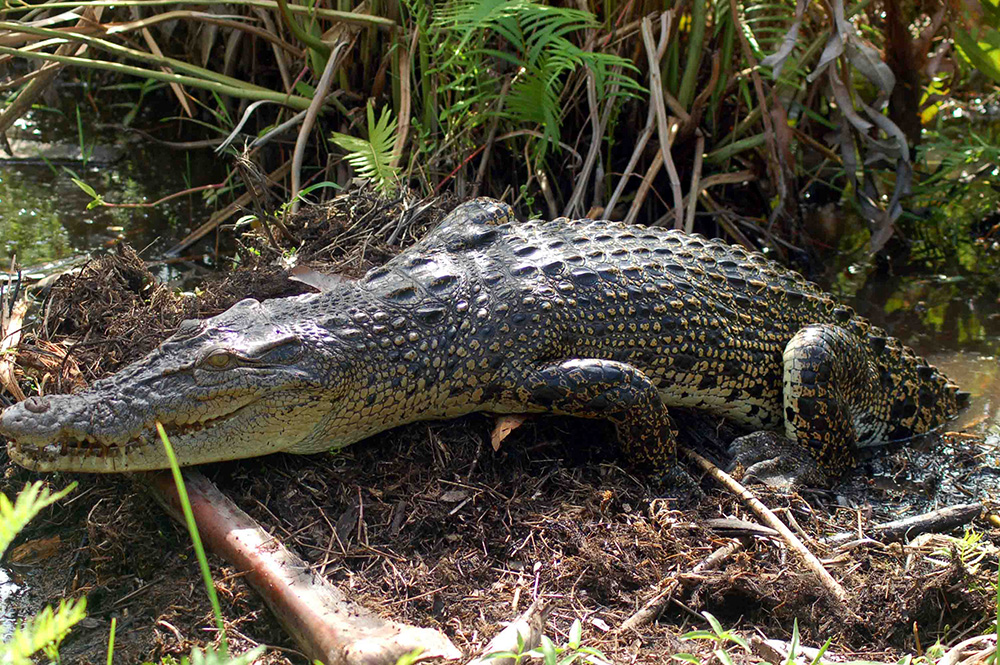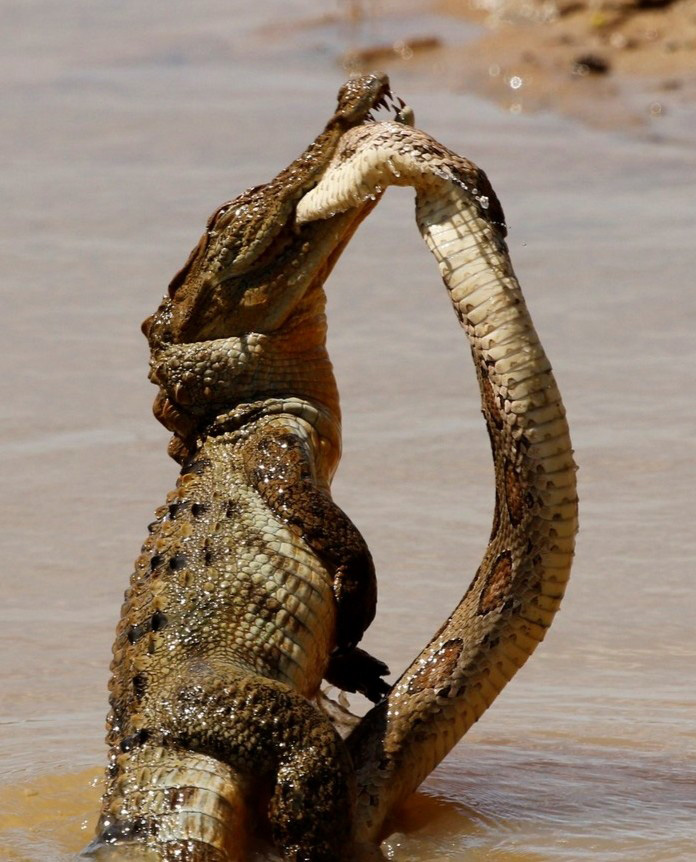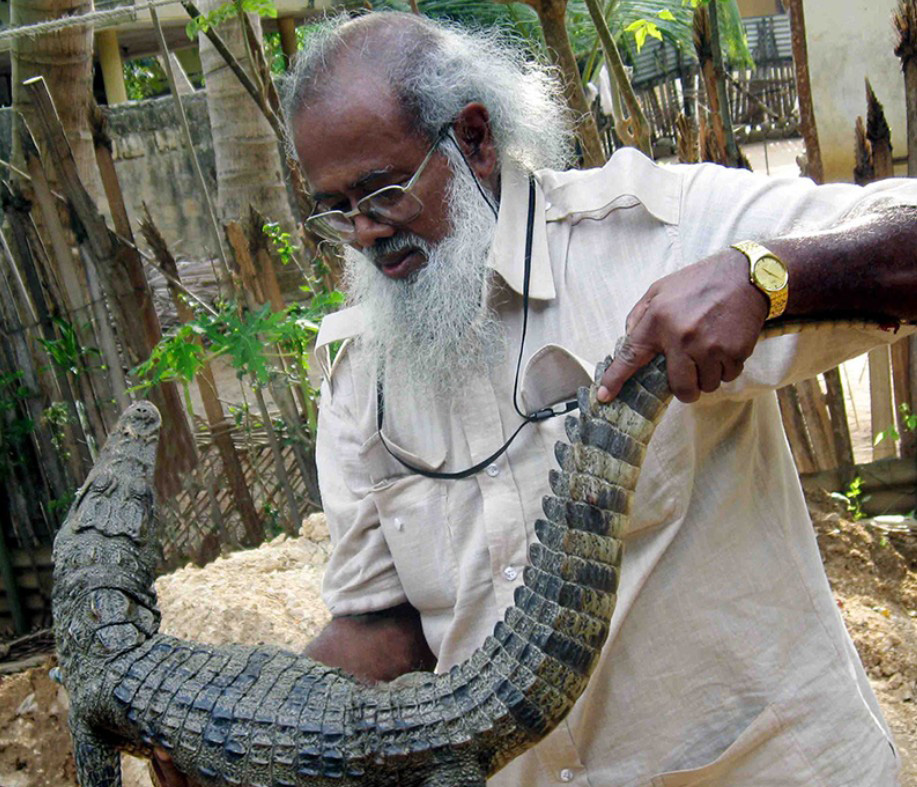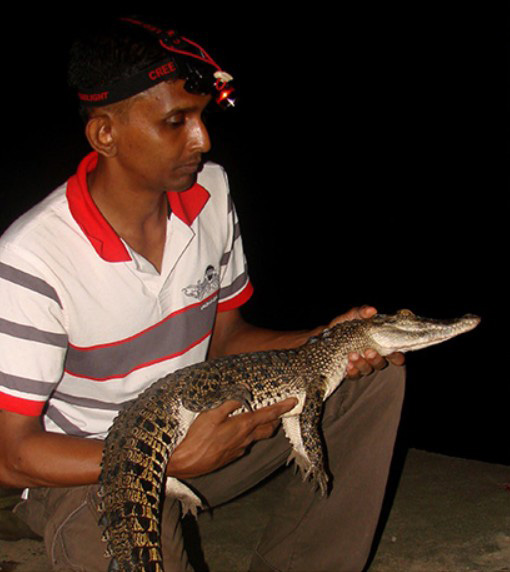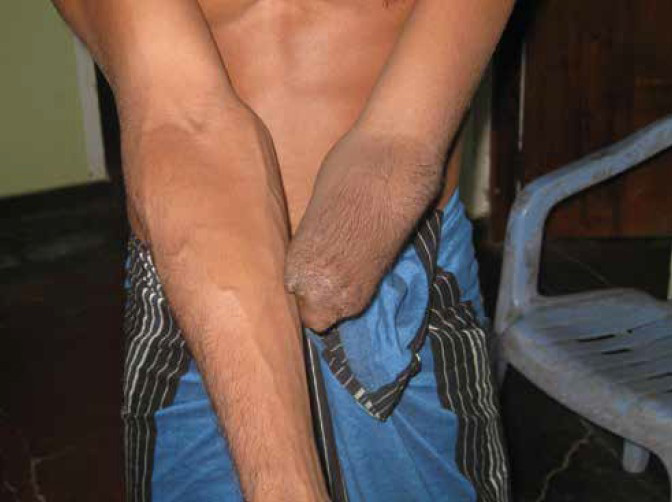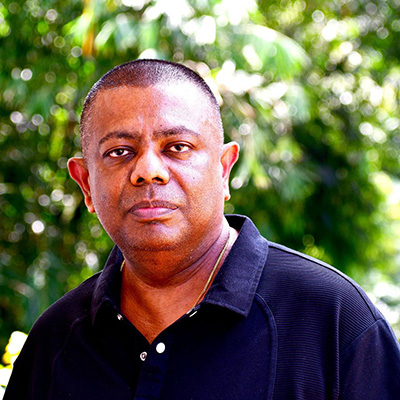Features
Dr. NM Perera’s days at S. Thomas’ & Ananda Colleges and entry into films

(Excerpted from NM – in his own words; as seen by others Edited by Prof. Colvin Goonaratna)
Somewhere towards the end of the war in 1918, I left St. Joseph’s School Grandpass, and sought admission to St. Thomas’ College, where my brothers were already boarded. Rev. Stone, who was Warden at the time, suggested that I make my application a year later, after a year at Cathedral Boy’s School, Mutwal, which was a branch of St. Thomas’ at the old premises.
I spent an uneventful year at the school to which I walked from home every morning, a distance of about three miles. My mother gave me 15 cents to spend on my lunch. I generally ate a bun with a cup of plain tea thrown in. Rest of the money I devoted to gram. After school, I trudged back home for a hefty plate of rice.
This school left no impression on me at all. Of the teachers, only one, Mr. Thambimuttu, remains in my memory. He taught me boxing. Mr. Jayasekera also rings a bell in my mind as a person who came occasionally to teach me singing. I made no headway in this.
In 1919, I went to the main College, St. Thomas’, as a boarder at Mount Lavinia. My elder brother, N.S.Perera, was already the Prefect at Coppleston House. My other brother, David, was also in the same House. Quite naturally I found myself installed at this House from the first day. Normally juniors gravitate from the ‘small houses’ like Winchester to the ‘big houses’ like Chapman and Coppleston. I escaped the hierarchical flow.
Coppleston was situated outside the bounds of the college proper. Since dormitory arrangements were still in the incubation stage, a private house was rented out as a dormitory. It was quite an old, somewhat ramshackle building with no running water. All of us had to troop to the well in the morning and there was quite a rush for the early morning ablutions.
There must have been about 40 of us in that ramshackle building with its uncemented floors. We had to march to the dining hall for morning tea and it was quite a sight to see the boys running half-dressed, unkempt, half-washed or unwashed. Some were lacing their boots as they walked, some were buttoning their clothes. Most of us were in various stages of disarray, but quite presentable by the time the hall was reached.
Needed no prodding
Of my school days, the period I spent at S. Thomas’ was the happiest. I look back to this period with genuine nostalgia. I reveled in the outdoor life it offered. As I have adverted earlier, studies came easily to me. I needed no prodding. I did enough to meet the requirements of the form-master and never thought of getting to the top of the class. It was sufficient for me that I was within the first ten.
As soon as school was over, we trooped into the dining hall for a cup of tea and a slice of bread which had a pat of butter. There might have been a sour plantain thrown in but this I cannot remember for certain, but food mattered least to us. We swallowed and gobbled and made a beeline to the cricket ground.
Cricket was the all-absorbing game. We lived for it, talked of it and dreamt of it. College was divided into two clubs. The small club and the big club. The small club was confined to the small boys and fell into four divisions. The smallest began in ‘D’ division. Every now and then, most promising boys were permitted to enter the ‘C’ division. As I showed some talent in cricket, I began with a jump to the ‘C’ division straightaway. From this, the best graduated to the ‘B’ division. From there the next step was ‘A’ division, which was a prelude to big club promotion.
All the best cricketers of the college were at the big club. We, of the small club, dreamt of the day when we would get promoted to the big club and eventually find a place in the first eleven, with the right to wear the college blazer.
Unprecedented feat
I think I made history at the small club of S, Thomas’. I was allocated to the ‘C’ division. Just above us was ‘B’ division which consisted of older boys with more cricketing prowess than us. After a few months the ‘C’ division accomplished an unprecedented and unheard of feat. We challenged the ‘B’ division and beat it handsomely. I take pride in the fact that I had a major hand in it with my bowling.
We were not content to rest on these laurels. We challenged the ‘A’ division and played on a proper matting wicket. The outcome of this match has slipped my memory, but we could not have fared too badly. We did have some good cricketers who blossomed out in college cricket in later years. Not long after this, I was promoted to the big club, but I did not stay long enough to qualify for the first eleven. I left St. Thomas’ for Ananda in 1922.
The whole atmosphere at St. Thomas’ at this time was pleasant and enjoyable. There was never a dull moment. The dormitory master was C. B. Paulick- Pulle who left us severely alone with little or no supervison. On Sunday morning, Rev. Stone, the Warden of the college, walked from his bungalow which was down the road by the railway crossing near the beach. He either played chess with us or draughts. He generally beat the boys at chess, I made up for it by defeating him at draughts.
My attachment to chess was induced by Rev. Stone and I am grateful to him, for it has continued to be a source of enjoyment to date. I never had the time to deviate into competitive chess. It continues to be a delectable relaxation from other work. Warden Stone also had a hand in moulding my educational career. He was responsible for diverting me from science to the classics.
He insisted that I take to Latin and Greek instead of science as my two elder brothers were already science students. We had already been inducted into Latin in fourth form. When I was promoted to the fifth form, which was preparatory to the Junior Cambridge, I was drawn into the study of Greek. I cannot say I was very enthusiastic, nor was I disposed to protest.
My elder brother, N. S. Perera, acquiesced and I fell in line. I can still remember the Greek alphabet, and the only book that has still remained in my memory is Zeno Phon Anabayis. Fortunately for me, I was moved away from St. Thomas’ before I could get absorbed into this dead language.
Gave nicknames to masters
We had some interesting characters as teachers at St. Thomas’. It was a tradition of the College to give nicknames to masters. Mr. C. V. Perera was dubbed ‘Soapa’ because it was said he had come to class half- shaved, and with soap on his face having been driven out of the house by his wife. He was a henpecked husband and generally took revenge by venting his ire on the boys.
He had a habit of slapping the boy nearest to him for a wrong answer given by a boy in the back of the class. Sometimes, he did a round of slapping for no ostensible reason that one can think of. But he
stopped short of the heftier boys who he feared might retaliate. I took the precaution of always sitting next to Dunstan de Silva, a forbidding hefty chap whom ‘Soapa’ never touched. ‘Soapa’ did our Latin and Greek.
Hilary Jansz commanded our respect because he was a strict disciplinarian. He was called ‘Herali’. O.P. Gunaratne, known as ‘La Goone’ because of his penchant for French, was also a strict taskmaster. More amiable was ‘Rambuttan’ Amerasinghe devoted to Mathematics. ‘Holman’ Ohlums was more sedate and easygoing. But on occasion he did a vicious horse-bite on the thighs of boys. Wanigasekera ‘Coolpide’ taught elementary science but was not very impressive. Mr. Arndt was volatile and aloof; he covered English literature and Greek. He had a reputation as a Shakespearean actor. He produced “Twelfth Night”, playing the part of Malvolio. I believe it made quite a hit at the time.
A man whom all of us feared was ” Nain Cotta” Navaratnam, the dormitory master of Chapman house. A short man with a short temper with a biting tongue as vicious as his mien. He kept very much to himself because he was more concerned with his law studies than teaching. He eventually passed on to practice at the bar with some degree of success.
Important watershed in life
I left St. Thomas’ College and joined Ananda in the year 1922, This sudden switch from a missionary
institution to a national institution marked an important watershed in my life. Many reasons contributed to this significant change.
Under the dynamic leadership of Mr. P de S. Kularatne, Ananda was becoming the premier Buddhist educational establishment of the country. More than that, it was in the forefront of education. It outshone other colleges in the results it achieved in public examinations. An outstanding staff gave it a pre- eminence which attracted the best talents of the student population.
Apart from Mr. Kularatne himself, we had such teachers like G. Weeramantry, T.B. Jayah, G.P. Malalasekera, C. Suntheralingam, C. S. Strange, C.V. Ranawaka, William Perera, J.N. Jinendradasa, L.H. Mettananda, G.C. Edirisinghe, etc.
Furthermore, this was the period of Buddhist revival coupled with nationalism. Mr. Kularatne himself had led the way by donning the national dress and discarding the coat and trousers as foreign to our cultural heritage. Doubtless, the ferment in India under the leadership of Mahatma Gandhi, Motilal Nehru, Sapru Malaviya and C.R. Das fired the imagination of an institution like Ananda.
It is no accident that Ananda at this time sponsored distinguished guest speakers such as Mrs. Sarojini Naidu and Dr. Evans Wentz. While Mrs. Sarojini Naidu kindled our national aspirations, Dr. E. Evans Wentz stimulated the Buddhist revival. These were but two facets of the single objective of national regeneration. National independence was a sine qua non for Buddhism to regain its rightful place in the country. This trend of thought got additional stimulus from an address by Mrs. Annie Besant.
Pestering relatives
I was thus catapulted from a carefree world of sport and an alien atmosphere to a new world of intense
nationalism. In my last year at St. Thomas’, I had been smoothly inveigled into becoming a Christian as a result of some slick work on the part of Rev. G. B. Ekanayake. I was rescued just in time by the vigilance of my parents who gently whisked me away from that atmosphere.
The transfer to Ananda was facilitated also by the change of abode from St. Joseph’s Street to Maligakanda. My father decided to run away from his pestering relatives in the Grandpass area and shifted to a rented house in Maligakanda Road. There was the added reason that my elder brother, N. S. Perera, had finished his schooling. All three of us, therefore, left the boarding at Mount Lavinia.
I continued my studies at Ananda. My elder brother, David, dropped out of his studies. N. S. took to teaching for a short while before joining the Survey Department as a probationary Assistant Superintendent of Surveys, one of the first batches I believe opened to Ceylonese.
Student life at Ananda was quite different to the carefree, playful atmosphere of St. Thomas’. As a day scholar, I had not the constant companionship of students that a boarding life offers. I came bang into the problems connected with domestic life. Congested Maligakanda was not an invigorating place. There were no congenial companions close by and the lighthearted happiness I enjoyed at Mount Lavinia had evaporated.
Fortunately, we did not dwell long at Maligakanda. Within the space of a year or so, we shifted to No. 41, Campbell Place, a house with a garden in front and the rear. Father had purchased it and there we felt a sense of relief. Our neighbours were kind and friendly. I was particularly pleased because the college playground was only a few minutes’ walk from home.
With my admission to Ananda, my concentration on studies increased. I cleared both Junior and Senior Cambridge examinations without much effort though I do not think I did anything outstanding. Still, my first love was cricket. The strong predilection that I had for outdoor sport, continued unabated. Football, hockey, athletics and cadeting, all absorbed most of my waking thoughts. Studies were not neglected. I took them in my stride. When I left St. Thomas’, Latin and Greek were also left behind.
Ananda had jettisoned these dead languages and I got propelled into more exciting studies like history and geography. I was pushed into botany and chemistry as well. These latter subjects never caught my fancy, may be because the teachers were not inspiring enough.
At Ananda, after the first year, I was blossoming out as a leader of the students. Apart from the fact that as a cricketer of the first eleven, I commanded some prestige as I participated in more of the extra-curricular activities. Debating societies found in me an active member. At the fair for raising funds for the College, Mr. Kularatne would pick on me for responsible jobs. He felt he could depend on me to do my work without fear or favour.
More formative was the new atmosphere I breathed. I began to grasp the true meaning of Buddhism. Hitherto, it had been just ritual, going to temples with members of the family, reciting gathas and lighting oil lamps. Now, for the first time under the guidance of great teachers like Rev. Ananda Maithriya, Buddhist philosophy broadened my humanism. The reality of the doctrines began to penetrate the innermost recesses of my thinking. It was natural, therefore, that I observed Ata Sil on most Poya days while at Ananda.
Herein lay the great divide. Missionary education was both apolitical and anti-national, not specifically, but insidiously so. An institution like Ananda had a different tone and a different atmosphere. At Ananda, one felt the impact of everything that was happening in the country, to the people of the country. At an institution like St. Thomas’, one felt aloof and immune from the hurly burly of everyday life. I believe this was typical of most missionary schools that functioned during this time.
In this new atmosphere charged with nationalist feelings, the more serious side of my character was being stirred. Ananda was slowly remoulding me. Every discussion, every controversy was stirring something latent in my consciousness. In the not too distant future, these smouldering embers would be kindled and the blazing fire would help devour much of the privileges and injustices of an alien hegemony.
Came a cropper
I came a cropper at the 1924. London Matriculation Examination, the only examination I ever failed. I had offered botany as one of the subjects, and it pulled me down. So much depends on the correct approach of the teacher in stimulating the interest of the subject, that botany never caught my imagination at that time. Looking back, I think this is a pity because it can be a fascinating subject if more field work and less classroom studies are undertaken.
Anyhow, I switched from botany to logic the following year and easily cleared the hurdle. Here, I must pay a tribute to the teacher who made a vital difference to me in my studies. I refer to Mr. G. C. Edirisinghe. He generated a new enthusiasm in the study of history in particular. A keen mind, George, as we fondly called him, had read widely. He was well steeped in Gibbon and had a good grasp of the philosophy of history. He had the capacity to impart the wide knowledge he had imbibed. With history ceasing to be a dull recitation of dates, but a living comprehension of the threads that bind humanity as it moved towards a higher synthesis, I am deeply beholden to him for the help he gave me.
I left Ananda in 1925 after the inter- collegiate cricket season. I captained the team and we did fairly well as a side. We played a number of matches with other big colleges, a privilege which we did not enjoy in previous years. So strong was the prejudice against Ananda by the top missionary colleges.
A gap of five to six months intervened between leaving Ananda and joining the University College.
There was no University then. We had a College affiliated to the London University for the examinations which the students sat. Time would have been weighing on me heavily during this gap, had not chance offered me a stranger and exciting experience.
Mr. Noorbhai of Bambalapitiya had decided to screen a film in Ceylon and engaged a Bengali producer, Mr. Gupta. An advertisement appeared in the local press calling for would be actors and actresses. Partly out of curiosity, partly as a lark, I applied. To my surprise I was interviewed and chosen to take the part of the hero. I was reconciled to be allotted some minor role, and the chief role was more than my wildest dream entertained.
The location of this new film venture was in Joseph Lane, Bambalapitiya. It was a house belonging to Mr. Noorbhai situated quite close to his own abode. At this distance of time I have only a foggy memory of the place and its layout. It was bare of all furniture, and I believe Mr. Gupta, the director, sat cross-legged on a mat and interviewed me. He was a small-made shabbily dressed unimpressive man, whose knowledge about film production could not be rated very high. He wore a dhoti that does not seem to have seen the dhoby for some time.
His appearance was indicative of his limited mental equipment for the onerous task of producing a film. He might have been a technician of some sort from Bengal. Somehow or other, he seems to have inveigled the hardheaded businesses man, Mr. Noorbhai, into embarking on a doubtful venture.
Features
When floods strike: How nations keep food on the table

Insights from global adaptation strategies
Sri Lanka has been heavily affected by floods, and extreme flooding is rapidly becoming one of the most disruptive climate hazards worldwide. The consequences extend far beyond damaged infrastructure and displaced communities. The food systems and supply networks are among the hardest hit. Floods disrupt food systems through multiple pathways. Croplands are submerged, livestock are lost, and soils become degraded due to erosion or sediment deposition. Infrastructural facilities like roads, bridges, retail shops, storage warehouses, and sales centres are damaged or rendered inaccessible. Without functioning food supply networks, even unaffected food-producing regions struggle to continue daily lives in such disasters. Poor households, particularly those dependent on farming or informal rural economies, face sharp food price increases and income loss, increasing vulnerability and food insecurity.
Many countries now recognie that traditional emergency responses alone are no longer enough. Instead, they are adopting a combination of short-term stabilisation measures and long-term strategies to strengthen food supply chains against recurrent floods. The most common immediate response is the provision of emergency food and cash assistance. Governments, the World Food Programme, and other humanitarian organisations often deliver food, ready-to-eat rations, livestock feed, and livelihood support to affected communities.
Alongside these immediate measures, some nations are implementing long-term strategic actions. These include technology- and data-driven approaches to improve flood preparedness. Early warning systems, using satellite data, hydrological models, and advanced weather forecasting, allow farmers and supply chain operators to prepare for potential disruptions. Digital platforms provide market intelligence, logistics updates, and risk notifications to producers, wholesalers, and transporters. This article highlights examples of such strategies from countries that experience frequent flooding.
China: Grain Reserves and Strategic Preparedness
China maintains a large strategic grain reserve system for rice, wheat, and maize; managed by NFSRA-National Food and Strategic Reserves Administration and Sinograin (China Grain Reserves Corporation (Sinograin Group), funded by the Chinese government, that underpins national food security and enables macro-control of markets during supply shocks. Moreover, improvements in supply chain digitization and hydrological monitoring, the country has strengthened its ability to maintain stable food availability during extreme weather events.
Bangladesh: Turning Vulnerability into Resilience
In recent years, Bangladesh has stood out as one of the world’s most flood-exposed countries, yet it has successfully turned vulnerability into adaptive resilience. Floating agriculture, flood-tolerant rice varieties, and community-run grain reserves now help stabilise food supplies when farmland is submerged. Investments in early-warning systems and river-basin management have further reduced crop losses and protected rural livelihoods.
Netherlands, Japan: High-Tech Models of Flood Resilience
The Netherlands offers a highly technical model. After catastrophic flooding in 1953, the country completely redesigned its water governance approach. Farmland is protected behind sea barriers, rivers are carefully controlled, and land-use zoning is adaptive. Vertical farming and climate-controlled greenhouses ensure year-round food production, even during extreme events. Japan provides another example of diversified flood resilience. Following repeated typhoon-induced floods, the country shifted toward protected agriculture, insurance-backed farming, and automated logistics systems. Cold storage networks and digital supply tracking ensure that food continues to reach consumers, even when roads are cut off. While these strategies require significant capital and investment, their gradual implementation provides substantial long-term benefits.
Pakistan, Thailand, Indonesia, and Vietnam: Reform in Response to Recurrent Floods
In contrast, Pakistan and Thailand illustrate both the consequences of climate vulnerability and the benefits of proactive reform. The 2022 floods in Pakistan submerged about one-third of the country, destroying crops and disrupting trade networks. In response, the country has placed greater emphasis on climate-resilient farming, water governance reforms, and satellite-based crop monitoring. Pakistan as well as India is promoting crop diversification and adjusting planting schedules to help farmers avoid the peak monsoon flood periods.
Thailand has invested in flood zoning and improved farm infrastructure that keep markets supplied even during severe flooding. Meanwhile, Indonesia and Vietnam are actively advancing flood-adapted land-use planning and climate-resilient agriculture. For instance, In Vietnam’s Mekong Delta, pilot projects integrate flood-risk mapping, adaptive cropping strategies, and ecosystem-based approaches to reduce vulnerability in agricultural and distribution areas. In Indonesia, government-supported initiatives and regional projects are strengthening flood-risk-informed spatial planning, adaptive farming practices, and community-based water management to improve resilience in flood-prone regions. (See Figure 1)
 The Global Lesson: Resilience Requires Early Investment
The Global Lesson: Resilience Requires Early Investment
The global evidence is clear: countries that invest early in climate-adaptive agriculture and resilient logistics are better able to feed their populations, even during extreme floods. Building a resilient future depends not only on how we grow food but also on how we protect, store, and transport it. Strengthening infrastructure is therefore central to stabilising food supply chains while maintaining food quality, even during prolonged disruptions. Resilient storage systems, regional grain reserves, efficient cold chains, improved farming infrastructure, and digital supply mapping help reduce panic buying, food waste, and price shocks after floods, while ensuring that production capacity remains secure.
Persistent Challenges
However, despite these advances, many flood-exposed countries still face significant challenges. Resources are often insufficient to upgrade infrastructure or support vulnerable rural populations. Institutional coordination across the agriculture, disaster management, transport, and environmental sectors remains weak. Moreover, the frequency and scale of climate-driven floods are exceeding the design limits of older disaster-planning frameworks. As a result, the gap between exposure and resilience continues to widen. These challenges are highly relevant to Sri Lanka as well and require deliberate, gradual efforts to phase them out.
The Role of International Trade and global markets
When domestic production falls in such situations, international trade serves as an important buffer. When domestic production is temporarily reduced, imports and regional trade flows can help stabilise food availability. Such examples are available from other countries. For instance, In October 2024, floods in Bangladesh reportedly destroyed about 1.1 million tonnes of rice. In response, the government moved to import large volumes of rice and allowed accelerated or private-sector imports of rice to stabilize supply and curb food price inflation. This demonstrates how, when domestic production fails, international trade/livestock/food imports (from trade partners) acted as a crucial buffer to ensure availability of staple food for the population. However, this approach relies on well-functioning global markets, strong diplomatic relationships, and adequate foreign exchange, making it less reliable for economically fragile nations. For example, importing frozen vegetables to Sri Lanka from other countries can help address supply shortages, but considerations such as affordability, proper storage and selling mechanisms, cooking guidance, and nutritional benefits are essential, especially when these foods are not widely familiar to local populations.
Marketing and Distribution Strategies during Floods
Ensuring that food reaches consumers during floods requires innovative marketing and distribution strategies that address both supply- and demand-side challenges. Short-term interventions often include direct cash or food transfers, mobile markets, and temporary distribution centres in areas where conventional marketplaces become inaccessible. Price stabilisation measures, such as temporary caps or subsidies on staple foods, help prevent sharp inflation and protect vulnerable households. Awareness campaigns also play a role by educating consumers on safe storage, cooking methods, and the nutritional value of unfamiliar imported items, helping sustain effective demand.
Some countries have integrated technology to support these efforts; in this regard, adaptive supply chain strategies are increasingly used. Digital platforms provide farmers, wholesalers, and retailers with real-time market information, logistics updates, and flood-risk alerts, enabling them to reroute deliveries or adjust production schedules. Diversified delivery routes, using alternative roads, river transport, drones, or mobile cold-storage units, have proven essential for maintaining the flow of perishable goods such as vegetables, dairy, and frozen products. A notable example is Japan, where automated logistics systems and advanced cold-storage networks help keep supermarkets stocked even during severe typhoon-induced flooding.
The Importance of Research, Coordination, and Long-Term Commitment
Global experience also shows that research and development, strong institutional coordination, and sustained national commitment are fundamental pillars of flood-resilient food systems. Countries that have successfully reduced the impacts of recurrent floods consistently invest in agricultural innovation, cross-sector collaboration, and long-term planning.
Awareness Leads to Preparedness
As the summary, global evidence shows that countries that act early, plan strategically, and invest in resilience can protect both people and food systems. As Sri Lanka considers long-term strategies for food security under climate change, learning from flood-affected nations can help guide policy, planning, and public understanding. Awareness is the first step which preparedness must follow. These international experiences offer valuable lessons on how to protect food systems through proactive planning and integrated actions.
(Premaratne (BSc, MPhil, LLB) isSenior Lecturer in Agricultural Economics Department of Agricultural Systems, Faculty of Agriculture, Rajarata University. Views are personal.)
Key References·
Cabinet Secretariat, Government of Japan, 2021. Fundamental Plan for National Resilience – Food, Agriculture, Forestry and Fisheries / Logistics & Food Supply Chains. Tokyo: Cabinet Secretariat.
· Delta Programme Commissioner, 2022. Delta Programme 2023 (English – Print Version). The Hague: Netherlands Delta Programme.
· Hasanuddin University, 2025. ‘Sustainable resilience in flood-prone rice farming: adaptive strategies and risk-sharing around Tempe Lake, Indonesia’, Sustainability. Available at: https://www.mdpi.com/2071-1050/17/6/2456 [Accessed 3 December 2025].
· Mekong Urban Flood Resilience and Drainage Programme (TUEWAS), 2019–2021. Integrated urban flood and drainage planning for Mekong cities. TUEWAS / MRC initiative.
· Ministry of Agriculture and Rural Affairs, People’s Republic of China, 2025. ‘China’s summer grain procurement surpasses 50 mln tonnes’, English Ministry website, 4 July.
· National Food and Strategic Reserves Administration (China) 2024, ‘China purchases over 400 mln tonnes of grain in 2023’, GOV.cn, 9 January. Available at: https://english.www.gov.cn/archive/statistics/202401/09/content_WS659d1020c6d0868f4e8e2e46.html
· Pakistan: 2022 Floods Response Plan, 2022. United Nations / Government of Pakistan, UN Digital Library.
· Shigemitsu, M. & Gray, E., 2021. ‘Building the resilience of Japan’s agricultural sector to typhoons and heavy rain’, OECD Food, Agriculture and Fisheries Papers, No. 159. Paris: OECD Publishing.
· UNDP & GCF, 2023. Enhancing Climate Resilience in Thailand through Effective Water Management and Sustainable Agriculture (E WMSA): Project Factsheet. UNDP, Bangkok.
· United Nations Development Programme (UNDP), 2025. ‘Rice Bank revives hope in flood hit hill tracts, Bangladesh’, UNDP, 19 June.
· World Bank, 2022. ‘Bangladesh: World Bank supports food security and higher incomes of farmers vulnerable to climate change’, World Bank press release, 15 March.
Features
Can we forecast weather precisely?

Weather forecasts are useful. People attentively listen to them but complain that they go wrong or are not taken seriously. Forecasts today are more probabilistically reliable than decades ago. The advancement of atmospheric science, satellite imaging, radar maps and instantly updated databases has improved the art of predicting weather.
Yet can we predict weather patterns precisely? A branch of mathematics known as chaos theory says that weather can never be foretold with certainty.
The classical mechanics of Issac Newton governing the motion of all forms of matter, solid, liquid or gaseous, is a deterministic theory. If the initial conditions are known, the behaviour of the system at later instants of time can be precisely predicted. Based on this theory, occurrences of solar eclipses a century later have been predicted to an accuracy of minutes and seconds.
The thinking that the mechanical behaviour of systems in nature could always be accurately predicted based on their state at a previous instant of time was shaken by the work of the genius French Mathematician Henri Poincare (1864- 1902).
Eclipses are predicted with pinpoint accuracy based on analysis of a two-body system (Earth- Moon) governed by Newton’s laws. Poincare found that the equivalent problem of three astronomical bodies cannot be solved exactly – sometimes even the slightest variation of an initial condition yields a drastically different solution.
A profound conclusion was that the behaviour of physical systems governed by deterministic laws does not always allow practically meaningful predictions because even a minute unaccountable change of parameters leads to completely different results.
Until recent times, physicists overlooked Poincare’s work and continued to believe that the determinism of the laws of classical physics would allow them to analyse complex problems and derive future happenings, provided necessary computations are facilitated. When computers became available, the meteorologists conducted simulations aiming for accurate weather forecasting. The American mathematician Edward Lorenz, who turned into a reputed meteorologist, carried out such studies in the early 1960s, arrived at an unexpected result. His equations describing atmospheric dynamics demonstrated a strange behaviour. He found that even a minute change (even one part in a million) in initial parameters leads to a completely different weather pattern in the atmosphere. Lorenz announced his finding saying, A flap of a butterfly wing in one corner of the world could cause a cyclone in a far distant location weeks later! Lorenz’s work opened the way for the development branch of mathematics referred to as chaos theory – an expansion of the idea first disclosed by Henri Poincare.
We understand the dynamics of a cyclone as a giant whirlpool in the atmosphere, how it evolves and the conditions favourable for their origination. They are created as unpredictable thermodynamically favourable relaxation of instabilities in the atmosphere. The fundamental limitations dictated by chaos theory forbid accurate forecasting of the time and point of its appearance and the intensity. Once a cyclone forms, it can be tracked and the path of movement can be grossly ascertained by frequent observations. However, absolutely certain predictions are impossible.
A peculiarity of weather is that the chaotic nature of atmospheric dynamics does not permit ‘long – term’ forecasting with a high degree of certainty. The ‘long-term’ in this context, depending on situation, could be hours, days or weeks. Nonetheless, weather forecasts are invaluable for preparedness and avoiding unlikely, unfortunate events that might befall. A massive reaction to every unlikely event envisaged is also not warranted. Such an attitude leads to social chaos. The society far more complex than weather is heavily susceptible to chaotic phenomena.
by Prof. Kirthi Tennakone (ktenna@yahoo.co.uk)
Features
When the Waters Rise: Floods, Fear and the ancient survivors of Sri Lanka
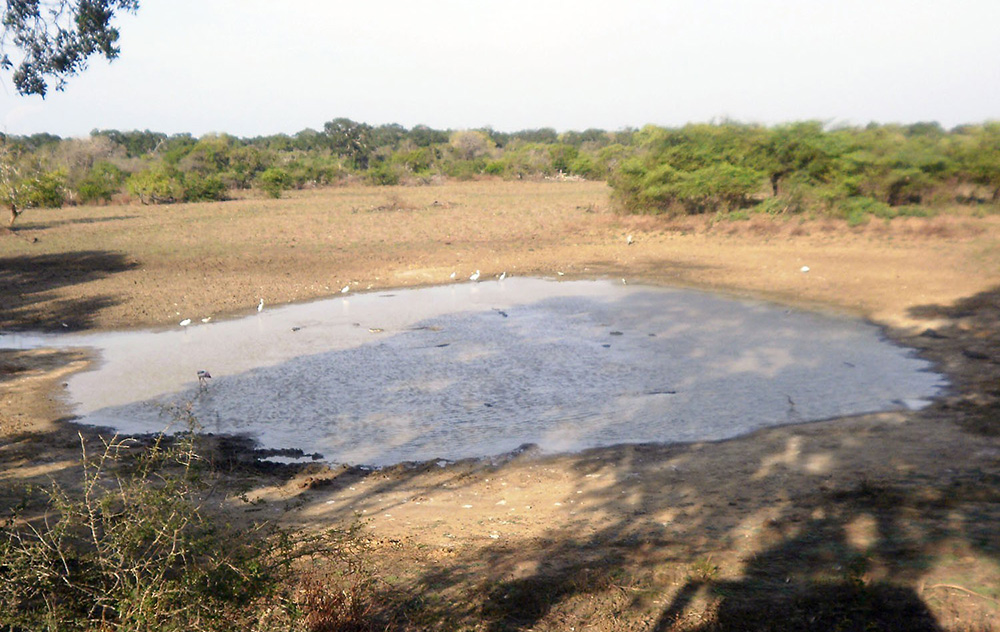
The water came quietly at first, a steady rise along the riverbanks, familiar to communities who have lived beside Sri Lanka’s great waterways for generations. But within hours, these same rivers had swollen into raging, unpredictable forces. The Kelani Ganga overflowed. The Nilwala broke its margins. The Bentara, Kalu, and Mahaweli formed churning, chocolate-brown channels cutting through thousands of homes.
When the floods finally began to recede, villagers emerged to assess the damage, only to be confronted by another challenge: crocodiles. From Panadura’s back lanes to the suburbs of Colombo, and from the lagoons around Kalutara to the paddy fields of the dry zone, reports poured in of crocodiles resting on bunds, climbing over fences, or drifting silently into garden wells.
For many, these encounters were terrifying. But to Sri Lanka’s top herpetologists, the message was clear: this is what happens when climate extremes collide with shrinking habitats.
“Crocodiles are not invading us … we are invading floodplains”
Sri Lanka’s foremost crocodile expert, Dr. Anslem de Silva, Regional Chairman for South Asia and Iran of the IUCN/SSC Crocodile Specialist Group, has been studying crocodiles for over half a century. His warning is blunt.
“When rivers turn into violent torrents, crocodiles simply seek safety,” he says. “They avoid fast-moving water the same way humans do. During floods, they climb onto land or move into calm backwaters. People must understand this behaviour is natural, not aggressive.”
In the past week alone, Saltwater crocodiles have been sighted entering the Wellawatte Canal, drifting into the Panadura estuary, and appearing unexpectedly along Bolgoda Lake.
“Saltwater crocodiles often get washed out to sea during big floods,” Dr. de Silva explains. “Once the current weakens, they re-enter through the nearest lagoon or canal system. With rapid urbanisation along these waterways, these interactions are now far more visible.”
- An adult Salt Water Crocodile (Crocodylus porosus) (Photo -Madura de Silva)
- Adult Mugger (Crocodylus plaustris) Photo -Laxhman Nadaraja
- A Warning sign board
- A Mugger holding a a large Russell ’s viper (Photo- R. M. Gunasinghe)
- Anslem de Silva
- Suranjan Karunarathna
This clash between wildlife instinct and human expansion forms the backdrop of a crisis now unfolding across the island.
A conflict centuries old—now reshaped by climate change
Sri Lanka’s relationship with crocodiles is older than most of its kingdoms. The Cūḷavaṃsa describes armies halted by “flesh-eating crocodiles.” Ancient medical texts explain crocodile bite treatments. Fishermen and farmers around the Nilwala, Walawe, Maduganga, Batticaloa Lagoon, and Kalu Ganga have long accepted kimbula as part of their environment.
But the modern conflict has intensified dramatically.
A comprehensive countrywide survey by Dr. de Silva recorded 150 human–crocodile attacks, with 50 fatal, between 2008 and 2010. Over 52 percent occurred when people were bathing, and 83 percent of victims were men engaged in routine activities—washing, fishing, or walking along shallow margins.
Researchers consistently emphasise: most attacks happen not because crocodiles are unpredictable, but because humans underestimate them.
Yet this year’s flooding has magnified risks in new ways.
“Floods change everything” — Dr. Nimal D. Rathnayake
Herpetologist Dr. Nimal Rathnayake says the recent deluge cannot be understood in isolation.
“Floodwaters temporarily expand the crocodile’s world,” he says. “Areas people consider safe—paddy boundaries, footpaths, canal edges, abandoned land—suddenly become waterways.”
Once the water retreats, displaced crocodiles may end up in surprising places.
“We’ve documented crocodiles stranded in garden wells, drainage channels, unused culverts and even construction pits. These are not animals trying to attack. They are animals trying to survive.”
According to him, the real crisis is not the crocodile—it is the loss of wetlands, the destruction of natural river buffers, and the pollution of river systems.
“When you fill a marsh, block a canal, or replace vegetation with concrete, you force wildlife into narrower corridors. During floods, these become conflict hotspots.”
Past research by the Crocodile Specialist Group shows that more than 300 crocodiles have been killed in retaliation or for meat over the past decade. Such killings spike after major floods, when fear and misunderstanding are highest.
“Not monsters—ecosystem engineers” — Suranjan Karunaratne
On social media, flood-displaced crocodiles often go viral as “rogue beasts.” But conservationist Suranjan Karunaratne, also of the IUCN/SSC Crocodile Specialist Group, says such narratives are misleading.
“Crocodiles are apex predators shaped by millions of years of evolution,” he says. “They are shy, intelligent animals. The problem is predictable human behaviour.”
In countless attack investigations, Karunaratne and colleagues found a repeated pattern: the Three Sames—the same place, the same time, the same activity.
“People use the same bathing spot every single day. Crocodiles watch, learn, and plan. They hunt with extraordinary patience. When an attack occurs, it’s rarely random. It is the culmination of observation.”
He stresses that crocodiles are indispensable to healthy wetlands. They: control destructive catfish populations, recycle nutrients, clean carcasses and diseased fish, maintain biodiversity, create drought refuges through burrows used by amphibians and reptiles.
“Removing crocodiles destroys an entire chain of ecological services. They are not expendable.”
Karunaratne notes that after the civil conflict, Mugger populations in the north rebounded—proof that crocodiles recover when given space, solitude, and habitat.
Floods expose a neglected truth: CEEs save lives—if maintained In high-risk communities, Crocodile Exclusion Enclosures (CEEs) are often the only physical barrier between people and crocodiles. Built along riverbanks or tanks, these enclosures allow families to bathe, wash, and collect water safely.
Yet Dr. de Silva recounts a tragic incident along the Nilwala River where a girl was killed inside a poorly maintained enclosure. A rusted iron panel had created a hole just large enough for a crocodile to enter.
“CEEs are a life-saving intervention,” he says. “But they must be maintained. A neglected enclosure is worse than none at all.”
Despite their proven effectiveness, many CEEs remain abandoned, broken or unused.
Climate change is reshaping crocodile behaviour—and ours
Sri Lanka’s floods are no longer “cycles” as described in folklore. They are increasingly intense, unpredictable and climate-driven. The warming atmosphere delivers heavier rainfall in short bursts. Deforested hillsides and filled wetlands cannot absorb it.
Rivers swell rapidly and empty violently.
Crocodiles respond as they have always done: by moving to calmer water, by climbing onto land, by using drainage channels, by shifting between lagoons and canals, by following the shape of the water.
But human expansion has filled, blocked, or polluted these escape routes.
What once were crocodile flood refuges—marshes, mangroves, oxbow wetlands and abandoned river channels—are now housing schemes, fisheries, roads, and dumpsites.
Garbage, sand mining and invasive species worsen the crisis
The research contained in the uploaded reports paints a grim but accurate picture. Crocodiles are increasingly seen around garbage dumps, where invasive plants and waste accumulate. Polluted water attracts fish, which in turn draw crocodiles.
Excessive sand mining in river mouths and salinity intrusion expose crocodile nesting habitats. In some areas, agricultural chemicals contaminate wetlands beyond their natural capacity to recover.
In Borupana Ela, a short study found 29 Saltwater crocodiles killed in fishing gear within just 37 days.
Such numbers suggest a structural crisis—not a series of accidents.
Unplanned translocations: a dangerous human mistake
For years, local authorities attempted to reduce conflict by capturing crocodiles and releasing them elsewhere. Experts say this was misguided.
“Most Saltwater crocodiles have homing instincts,” explains Karunaratne. “Australian studies show many return to their original site—even if released dozens of kilometres away.”
Over the past decade, at least 26 Saltwater crocodiles have been released into inland freshwater bodies—home to the Mugger crocodile. This disrupts natural distribution, increases competition, and creates new conflict zones.
Living with crocodiles: a national strategy long overdue
All three experts—Dr. de Silva, Dr. Rathnayake and Karunaratne—agree that Sri Lanka urgently needs a coordinated, national-level mitigation plan.
* Protect natural buffers
Replant mangroves, restore riverine forests, enforce river margin laws.
* Maintain CEEs
They must be inspected, repaired and used regularly.
* Public education
Villagers should learn crocodile behaviour just as they learn about monsoons and tides.
* End harmful translocations
Let crocodiles remain in their natural ranges.
* Improve waste management
Dumps attract crocodiles and invasive species.
* Incentivise community monitoring
Trained local volunteers can track sightings and alert authorities early.
* Integrate crocodile safety into disaster management
Flood briefings should include alerts on reptile movement.
“The floods will come again. Our response must change.”
As the island cleans up and rebuilds, the deeper lesson lies beneath the brown floodwaters. Crocodiles are not new to Sri Lanka—but the conditions we are creating are.
Rivers once buffered by mangroves now rush through concrete channels. Tanks once supporting Mugger populations are choked with invasive plants. Wetlands once absorbing floodwaters are now levelled for construction.
Crocodiles move because the water moves. And the water moves differently today.
Dr. Rathnayake puts it simply:”We cannot treat every flooded crocodile as a threat to be eliminated. These animals are displaced, stressed, and trying to survive.”
Dr. de Silva adds:”Saving humans and saving crocodiles are not competing goals. Both depend on understanding behaviour—ours and theirs.”
And in a closing reflection, Suranjan Karunaratne says:”Crocodiles have survived 250 million years, outliving dinosaurs. Whether they survive the next 50 years in Sri Lanka depends entirely on us.”
For now, as the waters recede and the scars of the floods remain, Sri Lanka faces a choice: coexist with the ancient guardians of its waterways, or push them into extinction through fear, misunderstanding and neglect.
By Ifham Nizam
-

 News7 days ago
News7 days agoWeather disasters: Sri Lanka flooded by policy blunders, weak enforcement and environmental crime – Climate Expert
-
News4 days ago
Lunuwila tragedy not caused by those videoing Bell 212: SLAF
-

 News2 days ago
News2 days agoLevel III landslide early warning continue to be in force in the districts of Kandy, Kegalle, Kurunegala and Matale
-

 Latest News5 days ago
Latest News5 days agoLevel III landslide early warnings issued to the districts of Badulla, Kandy, Kegalle, Kurunegala, Matale and Nuwara-Eliya
-

 Features5 days ago
Features5 days agoDitwah: An unusual cyclone
-

 Latest News5 days ago
Latest News5 days agoUpdated Payment Instructions for Disaster Relief Contributions
-

 Latest News6 days ago
Latest News6 days agoLandslide Early Warnings issued to the Districts of Badulla, Colombo, Gampaha, Kalutara, Kandy, Kegalle, Kurunegala, Matale, Moneragala, Nuwara Eliya and Ratnapura
-

 News14 hours ago
News14 hours agoA 6th Year Accolade: The Eternal Opulence of My Fair Lady


